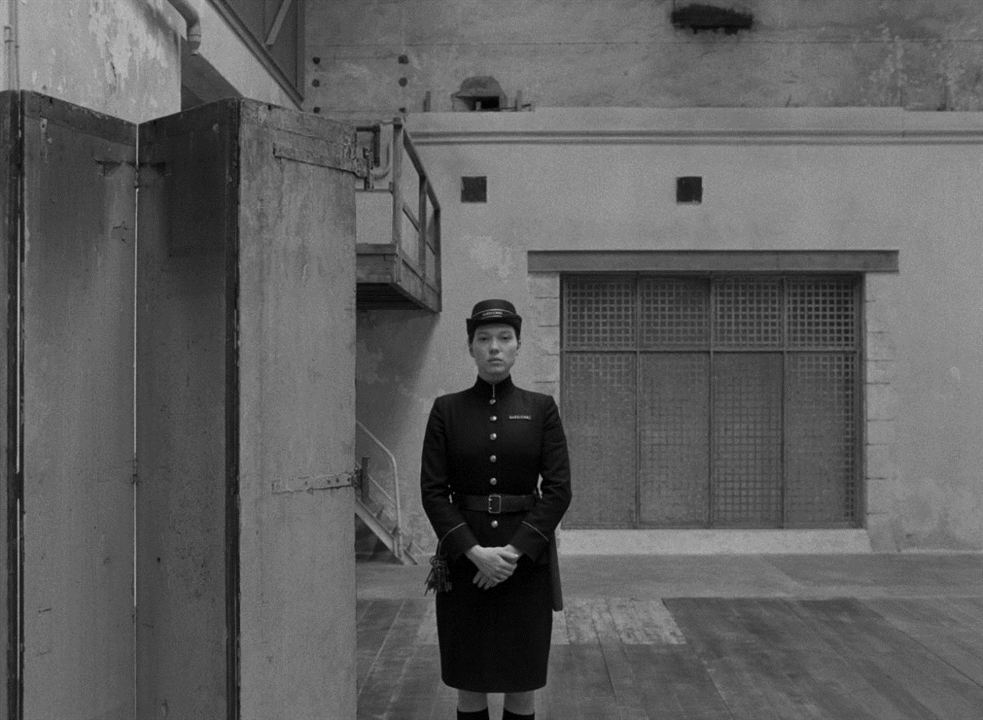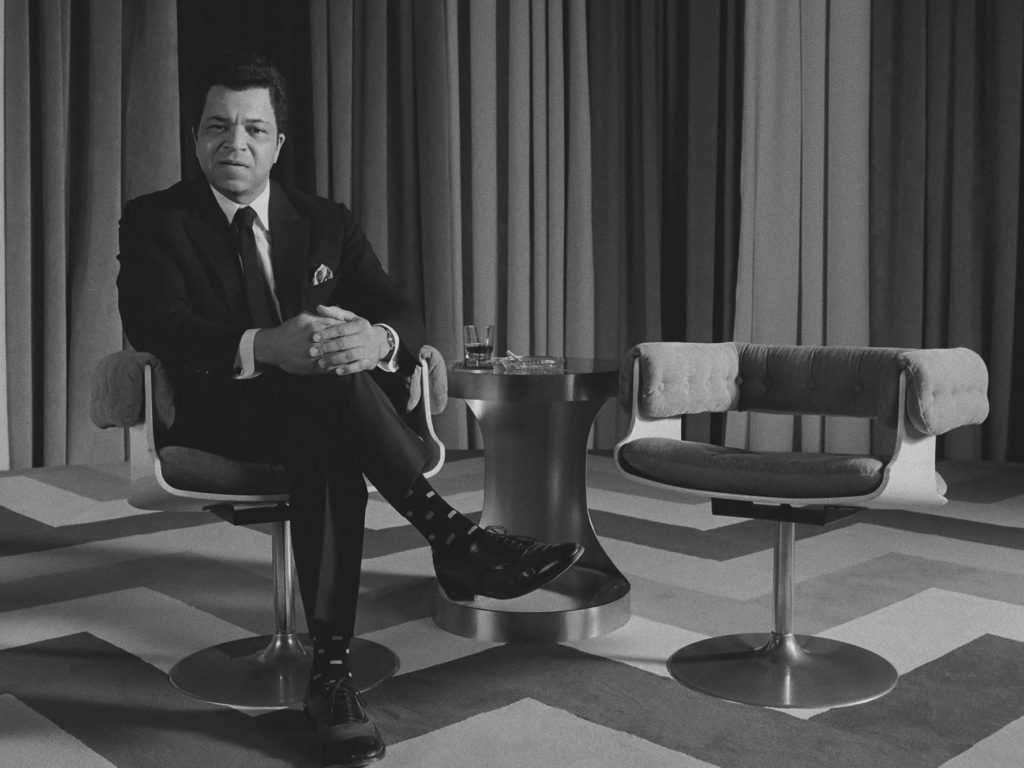韦斯-安德森带着他的第十部电影回来了,这是一部戏剧精选集,由一家美国杂志的最后一期法国特刊中的三篇虚构的 “文章 “组成,故事发生地也是虚构的法国城市Ennui-sur-Blasé。要想愉快地 “阅读 “这部影片,需要带上对韦斯-安德森的热爱,以及对他所致敬的那些素材的热爱:制片人宣称这是给《纽约客》杂志的一封情书。对于那些不熟悉《纽约客》的观众,以及那些对安德森的视觉创作越来越没耐心的观众,可能会想放弃他的最新电影,因为它是无结构和冷酷的,尽管它也探索了在作者的作品中从未出现过的新主题。
影片围绕的三篇文章的框架是由比尔·莫瑞(Bill Murray)饰演的主编去世后,最后一期《法兰西特派》的出版。

第一篇文章题为《具体的杰作》,讲述了一个囚犯(Benicio del Toro)为他的狱警西蒙娜(莱娅-赛杜)画了一幅裸体画像的故事。这一亲密的艺术行为很快就被同狱的朱利安-卡达齐奥(阿德里安·布罗迪饰演)变成了一个赚钱的机会。

第二篇文章题为《对宣言的修订》,讲述了泽菲雷利(提莫西·查拉梅)领导的学生革命,以及记者露辛达-克雷门茨(蒂尔达·斯温顿)是如何与这个年轻人发生了浪漫关系、并最终打破了她的新闻操守卷入了事件之中。

最后一篇文章《警察局长的私人餐厅》由杰佛瑞·怀特、马修·亚玛希、西尔莎-罗南等人主演,是影片中最长的一段。一个美食家、一次晚餐、一次绑架、枪战和毒药:这个荒唐的冒险是《法兰西特派》最后的故事。
通过阅读上述介绍,有一点可能是显而易见的,那就是它们之间没有联系,而这种感觉在观看安德森的电影时并没有消失:它变得更加强烈。“选集电影”在结构上总是一个难题,当它们由一个非常具体的类型或想法连接起来时,往往是最成功的(如恐怖选集《致命录像带》或《26种死法》,或 城市电影 如《巴黎,我爱你》和《纽约,我爱你》)。在《法兰西特派》的例子中,连接的主题是报纸本身,但作为一种视觉媒介,我们无法感觉到书页在我们手指下翻动的妙处。

韦斯-安德森尽力用他的标志性风格将每一个故事粘合在一起:紧凑的对称镜头,微缩的场景设计和柔和的色调。在视觉上,这是最韦斯-安德森的电影,即使不一定是最好的。这位电影制作人经过多年的发展,已经把现实世界的任何痕迹都抛在脑后,这种痕迹在他的处女作《瓶装火箭》中非常明显,一直到《穿越大吉岭》和《月升王国》。现在,现实已经完全被安德森似乎努力追求的儿童式复古糖果店世界所淹没,这几乎是对现实世界的残酷性的一种防御机制。不幸的是,这种风格已经变得如此完全僵化和完美,以至于没有给自发性或感觉留出空间。观众可能被给予了一个视觉仙境,但一旦你买了票并踏入其中,就会感到如此缺乏生命力。
撇开儿童式的风格不谈,《法兰西特派》也是安德森最成熟的电影之一,比他的其他作品更直接、更突出地处理死亡和性问题。塞杜和Del Toro 在《具体的杰作》中的关系不是一个爱情故事,而是一个欲望和情欲的故事。死亡大量渗透到第二和第三个故事中,而且不是以滑稽或不重要的方式来描绘的:这部影片中的死亡是有分量的。

很明显,随着韦斯-安德森年龄的增长和对其风格的极度完善,他的关注点也发生了变化。《法兰西特派》反映了一个更加怀旧的作者,一个至少暂时关注更多肉体问题,如死亡和性,而不是青春、爱情或可爱的会说话的动物的作者。对于许多影迷来说,这部电影缺乏奇思妙想,会让人失望,而其他人则会欣赏导演对新主题的探索。然而,同样明显的是,僵硬的视觉效果和新闻风格造成的距离感对影片的整体观感是一种损害。虽然不像安德森的其他作品那样让人一见倾心,但《法兰西特派》是一部有缺陷,但仍然值得入选这位电影人作品集的电影。

影评人简介
贝尔纳多·莱特(Bernardo Leyte),常驻巴黎的电影制作人。 他在西班牙、德国和英国长大,毕业于伦敦电影学院,目前担任导演。 他是一位充满热情的影迷,他所观看的电影囊括各种类型,从他的偶像斯坦利·库布里克(Stanley Kubrick)和安德烈·塔可夫斯基(Andrei Tarkovsky)的電影,到超级英雄、恐怖片、动漫等。

The French Dispatch review
Wes Anderson is back with his tenth feature film, an anthology comedy/drama made up of three fictional “articles” inside the final issue of an American magazine’s french dispatch, located in the also fictional city of Ennui-sur-Blasé, France. To “read” this film with enjoyment, a love of Wes Anderson is recommended, as well as the source material he is paying homage to; the filmmaker avows that this is a love letter to The New Yorker magazine. Viewers not familiar with the latter and whose patience for Anderson’s visual creations grows thin may want to abstain from his newest film, as it is oftentimes structureless and cold, though it also explores new themes previously unseen in the auteur’s oeuvre.
The framing device for the three articles that the film revolves around is the publication of the final issue of the french dispatch of the Liberty, Kansas Evening Sun following the death of its editor in chief, played by Bill Murray.
The first article, entitled The Concrete Masterpiece, tells the story of a prisoner (Benicio del Toro) who paints a nude portrait of his prison guard Simone (Léa Seydoux). This intimate act of art soon gets turned into a moneymaking opportunity by a fellow inmmate, Julien Cadazio (Adrien Brody).
The second article, titled Revisions to a Manifesto, tells the story of a student revolution led by Zefirelli (Timothy Chalamet) and how journalist Lucinda Krementz (Tilda Swinton) gets romantically involved with the young man, eventually breaking her journalistic integrity and getting involved in the events.
The final article, The Private Dining Room of the Police Commissioner, stars Jefrey Wright, Matthieu Amalric, Saoirse Ronan and more, and is the longest segment of the film. A food critic, a dinner, a kidnapping, shootouts and poison: this madcap adventure is the closing story of The French Dispatch.
One thing that may be obvious to the eye by reading these stories is that they are not connected, and this feeling doesn’t go away when watching Anderson’s film: it intensifies. Anthology films are always a difficulty structurally, and they are often most successful when they are connected by one very specific genre or idea (as in the case in horror anthologies like VHS or the ABCs of Death, or “city films” like Paris, je T’aime and New York, I love you.) In the case of The French Dispatch, the connecting tissue is the newspaper itself, but this being a visual medium, we do not have the benefit of feeling the pages turning under our fingers.
Wes Anderson does his best to glue every story together with his signature style: tightly composed symmetrical shots, miniature-like set design and soft colour palettes. Visually, this the most Wes Anderson film ever, if not necessarily the best. The filmmaker has evolved over the years and left behind any traces of the real world, one that was very much present in his debut film Bottle Rocket, all the way up until The Darjeeling Limited and Moonrise Kingdom. Now, reality has been completely drowned out by the child-like vintage candy shop world that Anderson seems to strive towards, almost as a defense mechanism from the harshness of the real world. Unfortunately, this style has become so utterly rigid and perfect, that there’s no room for spontaneity or feeling; the audience may be treated to a visual wonderland, but never has it felt more devoid of life once you buy the ticket and step inside.
Child-like style aside, The French Dispatch is also one of Anderson’s most mature films, dealing with death and sex more directly and prominently than any of this other works. The relationship between Seydoux and Del Toro in The Concrete Masterpiece is not a love story, it is a story of desire and lust. Death permeates the second and third stories heavily, and it is not portrayed in a funny or unimportant way: the deaths in this film have weight.
It is clear that, as Wes Anderson has gotten older and refined his style to an extreme degree, his preoccupations have also changed. The French Dispatch reflects a more nostalgic auteur, and one that has, at least momentarily, focused on more corporeal concerns, such as death and sex, instead of youth, love or cute talking animals. For many fans, this film’s lack of whimsy will be disappointing, while others will appreciate the exploration of new themes. And yet, it is also evident that the rigid visuals and the distance the journalistic style creates are a detriment to the overall enjoyment of the film. Though not as immediately enjoyable as Anderson’s other works, The French Dispatch is a flawed but worthy entry in the filmmaker’s canon.

About the Author
Bernardo Leyte (Vigo, Spain) is a Paris-based filmmaker. He grew up in Spain, Germany and the UK, graduating as a director from the London Film School. He is a passionate cinephile whose eclectic film playlist includes a bit of everything, from his idols, Kubrick and Tarkovsky, to superheroes, horror, anime and everything in between.

